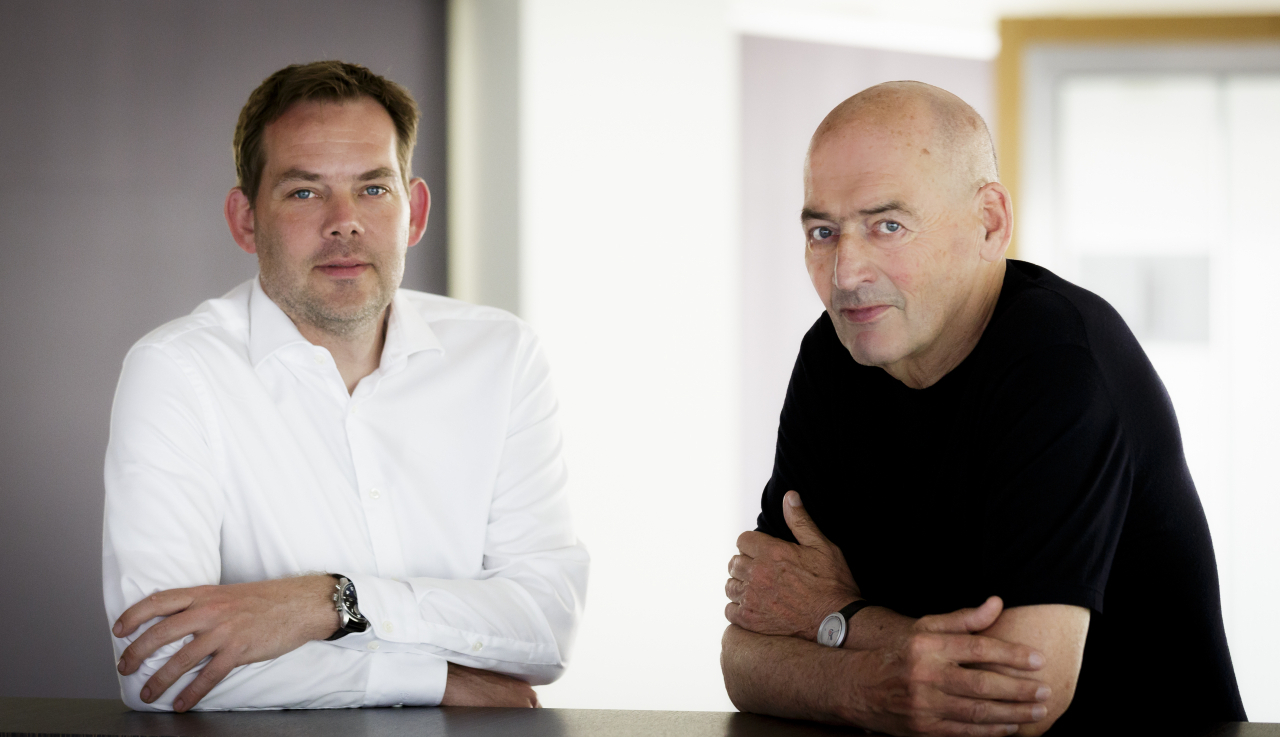 |
OMA architects David Gianotten (left) and Rem Koolhaas (Fred Ernst) |
TAIPEI, Taiwan -- One of the goals of architects in undertaking a public architecture project, such as the Taipei Performing Arts Center, is not to be wasteful.
“There is a very strong obligation in public work not to be wasteful in any way -- not with the resources, not with the space in the city, not with the opportunities you create,” said David Gianotten, the managing partner at OMA, in an interview with The Korea Herald in Taipei on March 18. Gianotten and OMA founder Rem Koolhaas led the team that designed the Taipei Performing Arts Center.
Accessibility to all and relevance are also of great importance as is ensuring that the architecture does not have a negative impact, not only on the climate but on the existing urban environment as well, Gianotten pointed out. There is also a "very big obligation to create something that people can still discover and add things to," he said.
Realizing such public architecture is a tall order, but it is an order which Koolhaas embraces fully.
Koolhaas observed that architecture has always been a very public art. “In a way, we have a very fundamental commitment to public buildings,” even in today's global economy that is increasingly market-driven, he said.
“We have searched out and selected public buildings to invest some of our greatest efforts into, and that’s a very deliberate campaign to maintain that kind of public aspect of architecture,” Koolhaas said.
About 40 percent of OMA’s projects are public buildings -- a high percentage, according to Gianotten. In the case of Koolhaas, public projects make up 80 percent of his portfolio.
Some recent examples of public buildings designed by OMA include the Qatar National Library, the WA Museum Boola Bardip in Perth, Australia and the Pierre Lassonde Pavilion at the Musee national des beaux-arts du Quebec. In Korea, OMA has designed the Seoul National University Art Museum and the master plan for the Leeum, Samsung Museum of Art as well as one of its three buildings. Its most recent project, the Galleria department store in Gwangyo, Gyeonggi Province led by partner Chris van Duijn, opened in 2020.
When asked what will be the focus of public architecture going forward, the architects said it would be ethics and accessibility.
“The focus of everybody right now is to not contribute to destructive kinds of efforts and to be even more aware and conscious of the impact of how you use different things and (their) impact on the world,” said Koolhaas.
Noting that privatization of the world has started making things exclusive, Gianotten suggested accessibility continuing to be a major focus.
“I think public architecture and public buildings have a big role to play in the accessibility of knowledge, in the accessibility of culture, in the accessibility of tradition, in the accessibility of nature and the world’s wonders,” said Gianotten.
“Public buildings and public institutions play an enormous role in keeping everything accessible,” he said.







